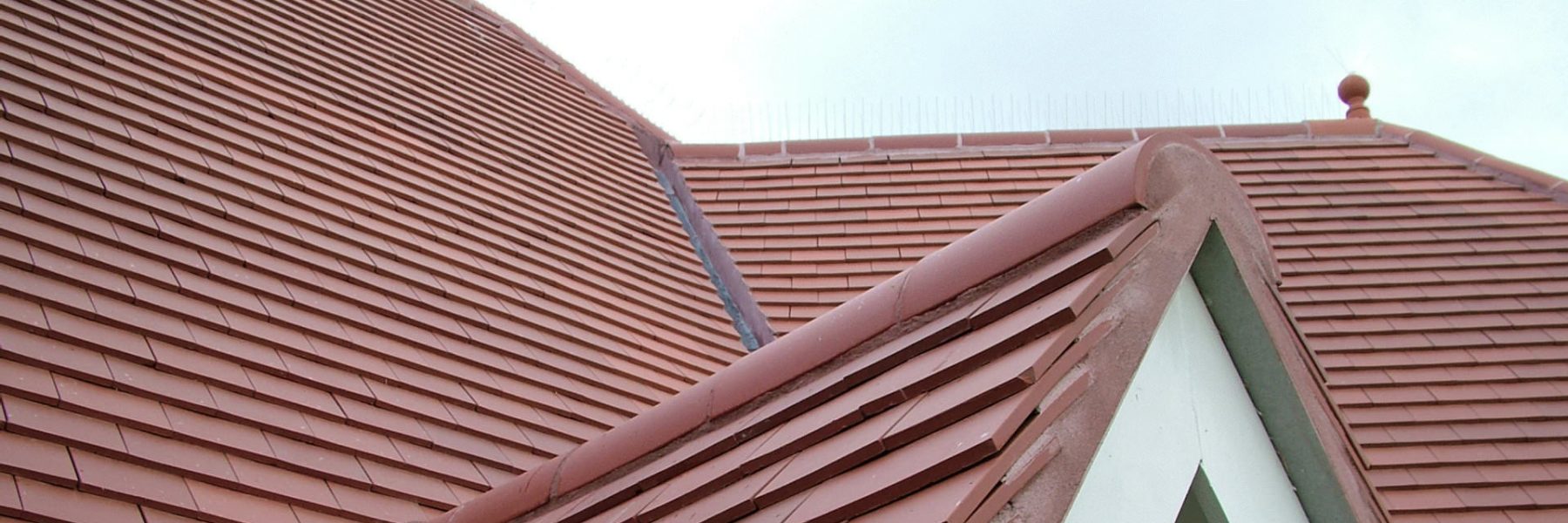Concrete & clay tiles
Contrary to popular belief, concrete is not a new material – in fact the Romans were the first to use it. Concrete is a composite material made from cement, other cementitious materials (such as fly ash), aggregate (such as gravel or crushed rocks and sand) with water.
Concrete solidifies and hardens after mixing with water. The water reacts with the cement to bond the other components together to create a robust, stone-like material. Concrete is used more than any other man-made material in the world.
Concrete roof tiles have been manufactured in the UK for nearly 100 years and it is now the most common material for new roofs. The natural colour of concrete is grey, but using coloured sands in the manufacturing process means that concrete roof tiles can be made to faithfully imitate the colour of naturally occurring clays or stones.
The manufacturing of concrete tiles can be rigorously controlled, ensuring that the end result is technically accurate and very consistent. As the products are manufactured in large quantities, the cost of concrete roof tiles will always be lower than clay, slate or stone equivalents.
Clay is one of the oldest building materials on earth. Clay is a naturally occurring mineral which is naturally pliable but which hardens when dried or fired. Clay roof tiles will be produced in a mould and, because they are made of a naturally occurring material, they will include attractive colour variations and will not be entirely regular in texture and dimension.
Clay roof tiles have always been particularly popular in the South of the UK where clay deposits are most common, and the colour variation in clay roof tiles reflects variations in the local clay deposits. The material is a popular choice for architects who like its traditional, rustic, irregularity and is frequently used on larger, high-value new homes.

